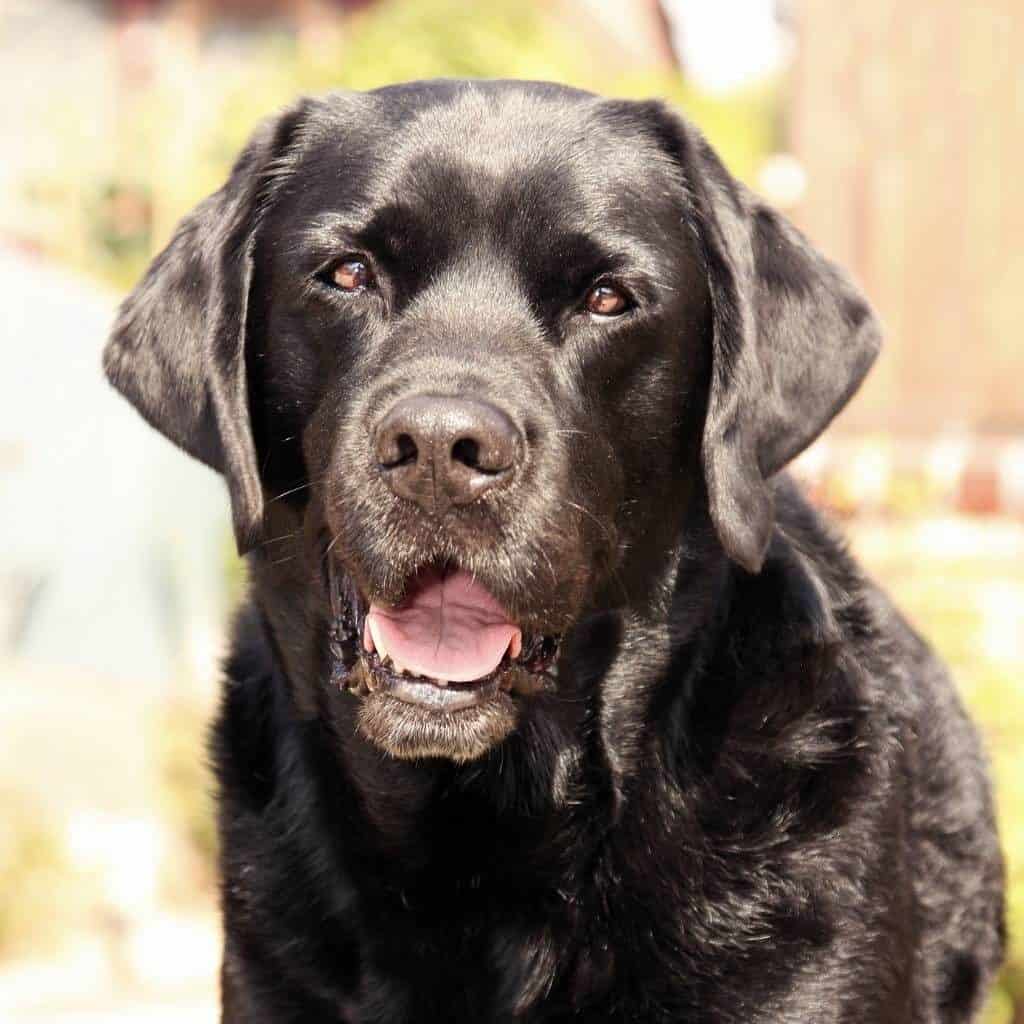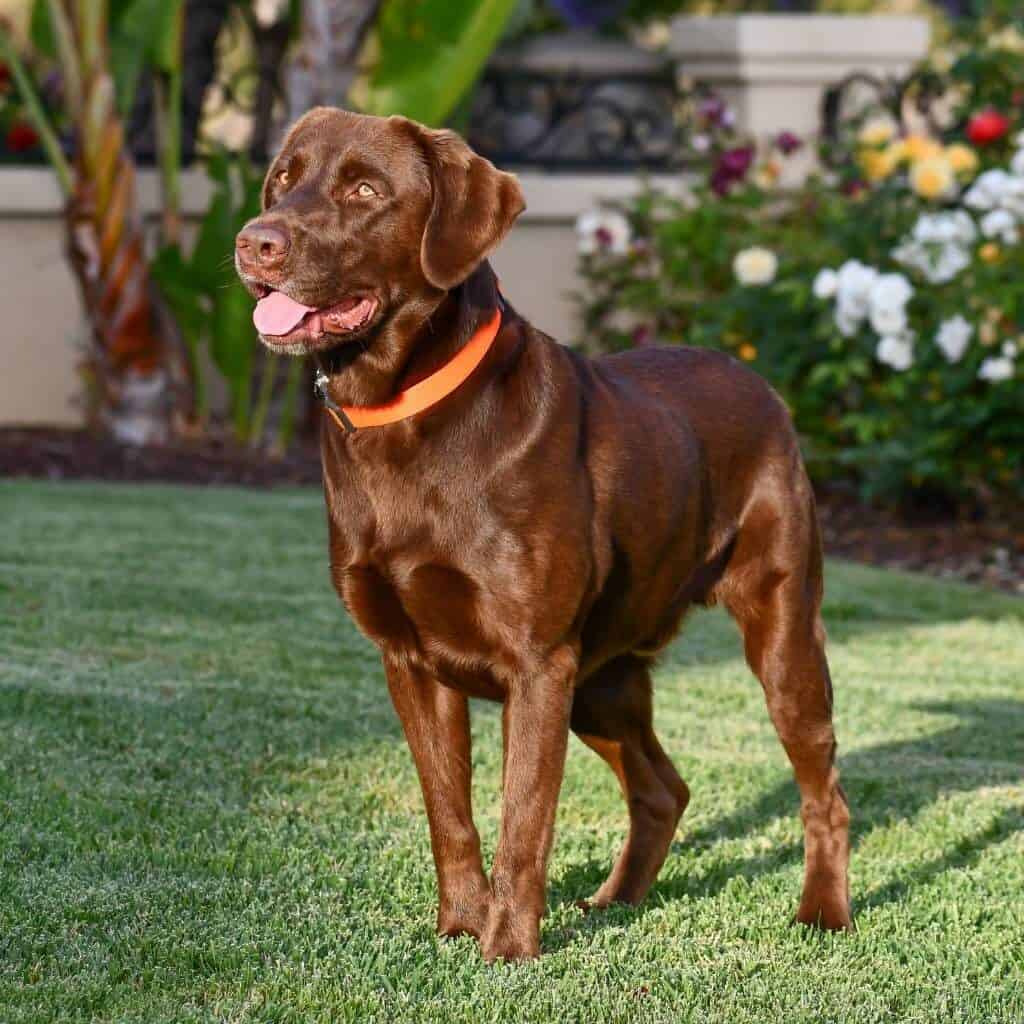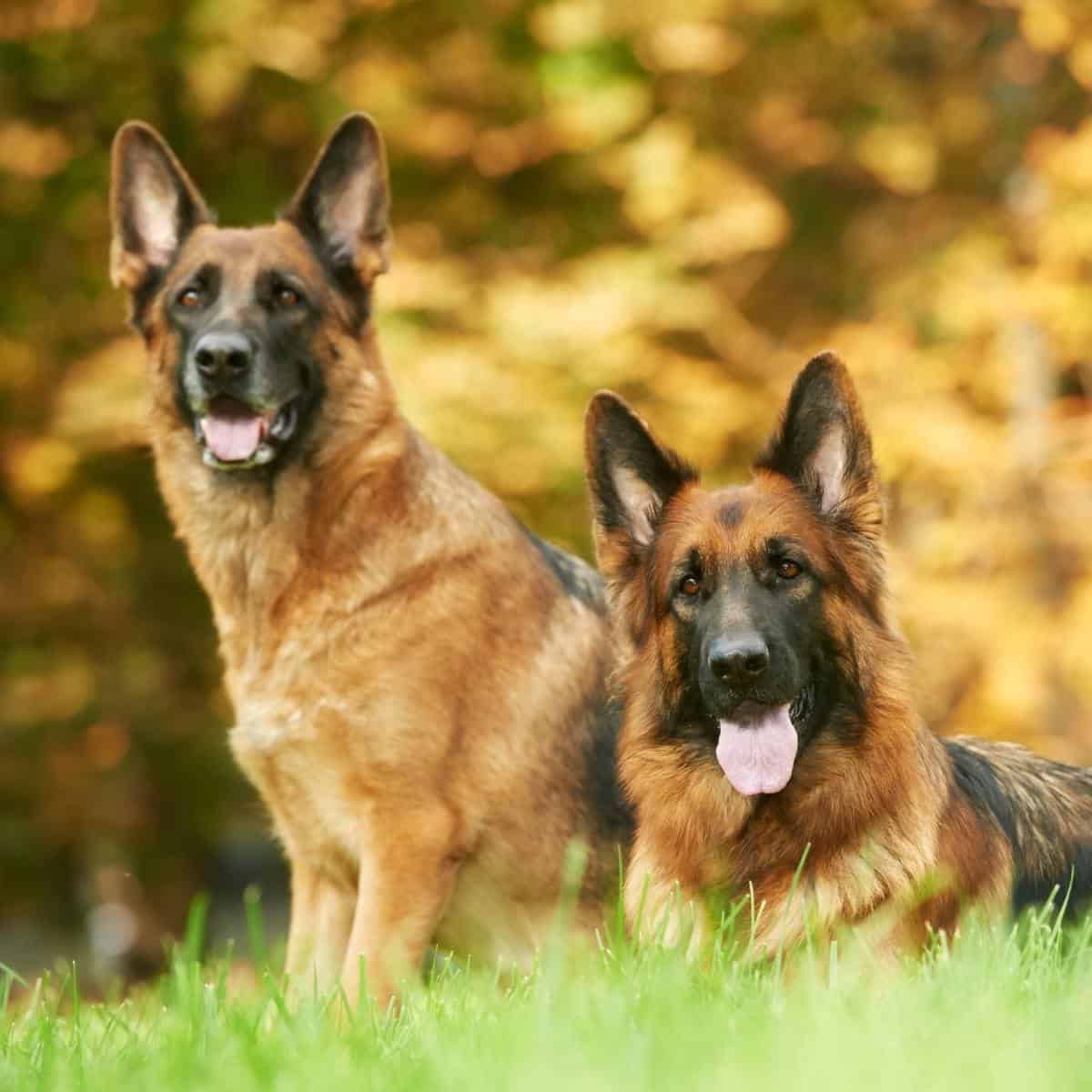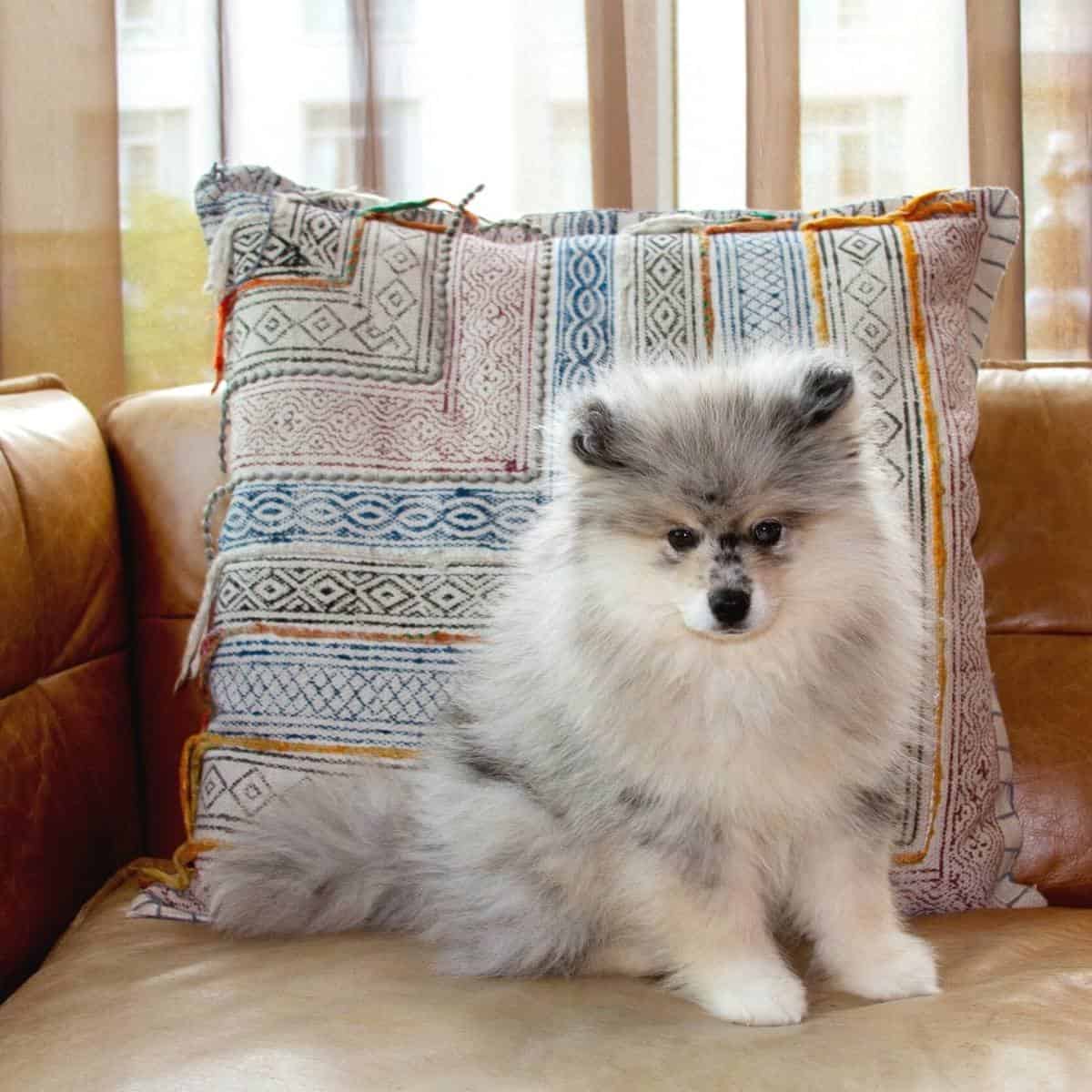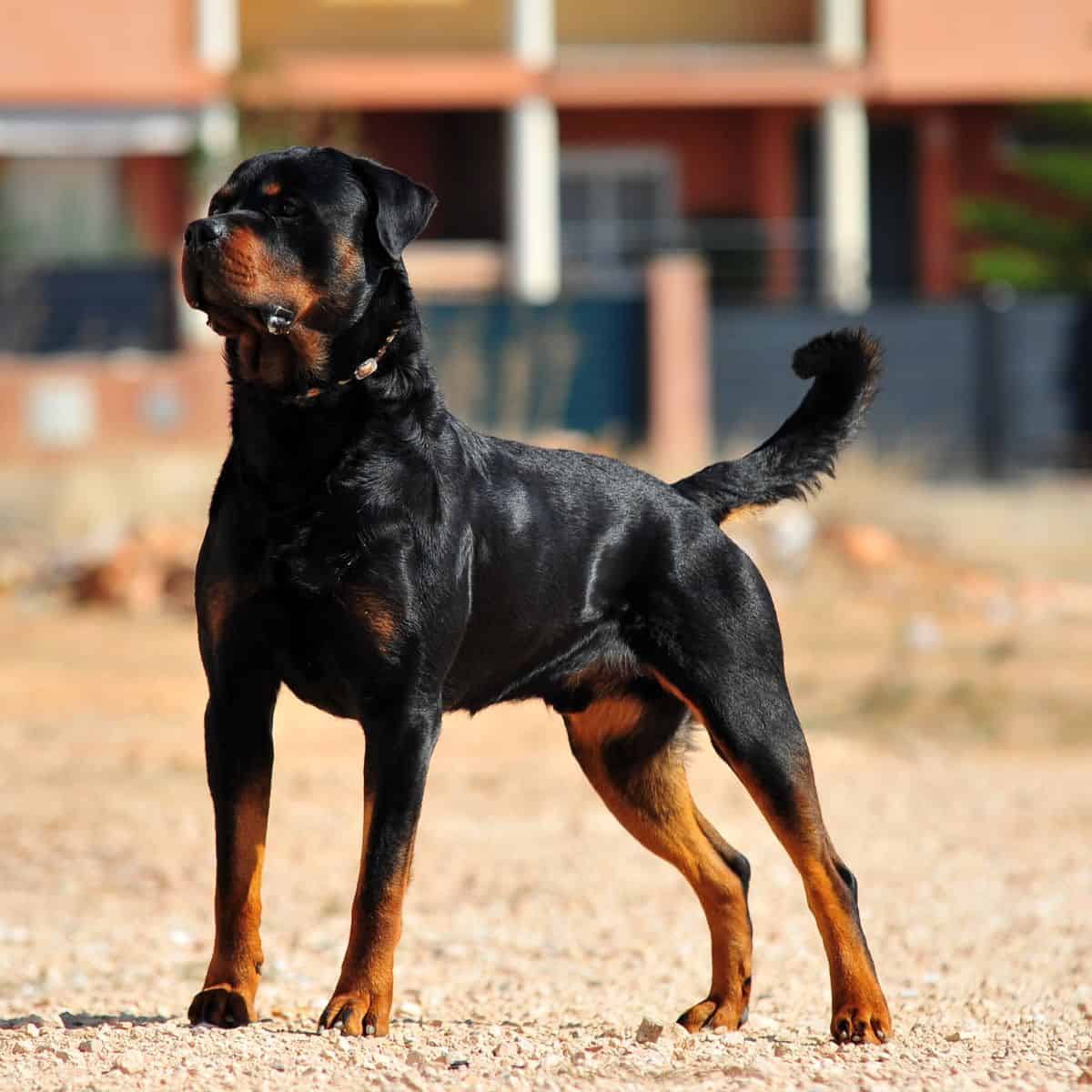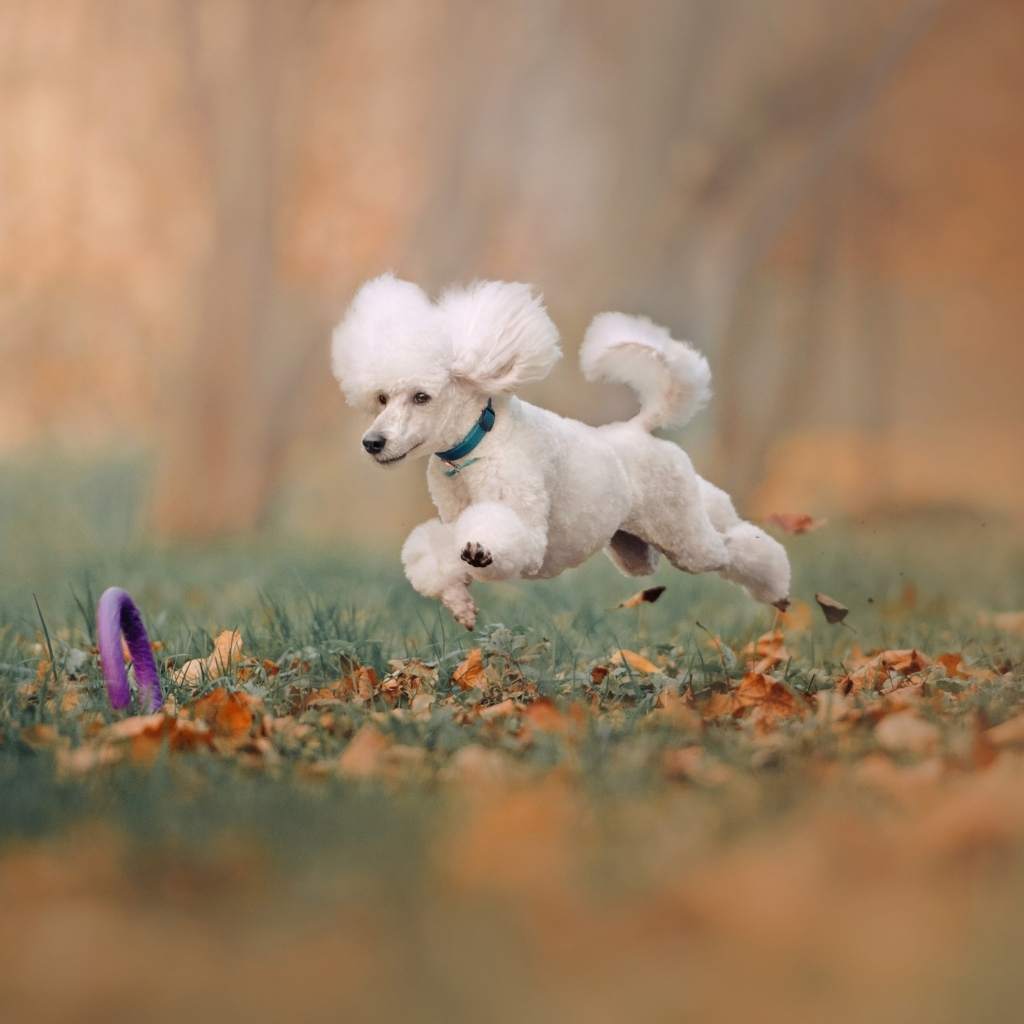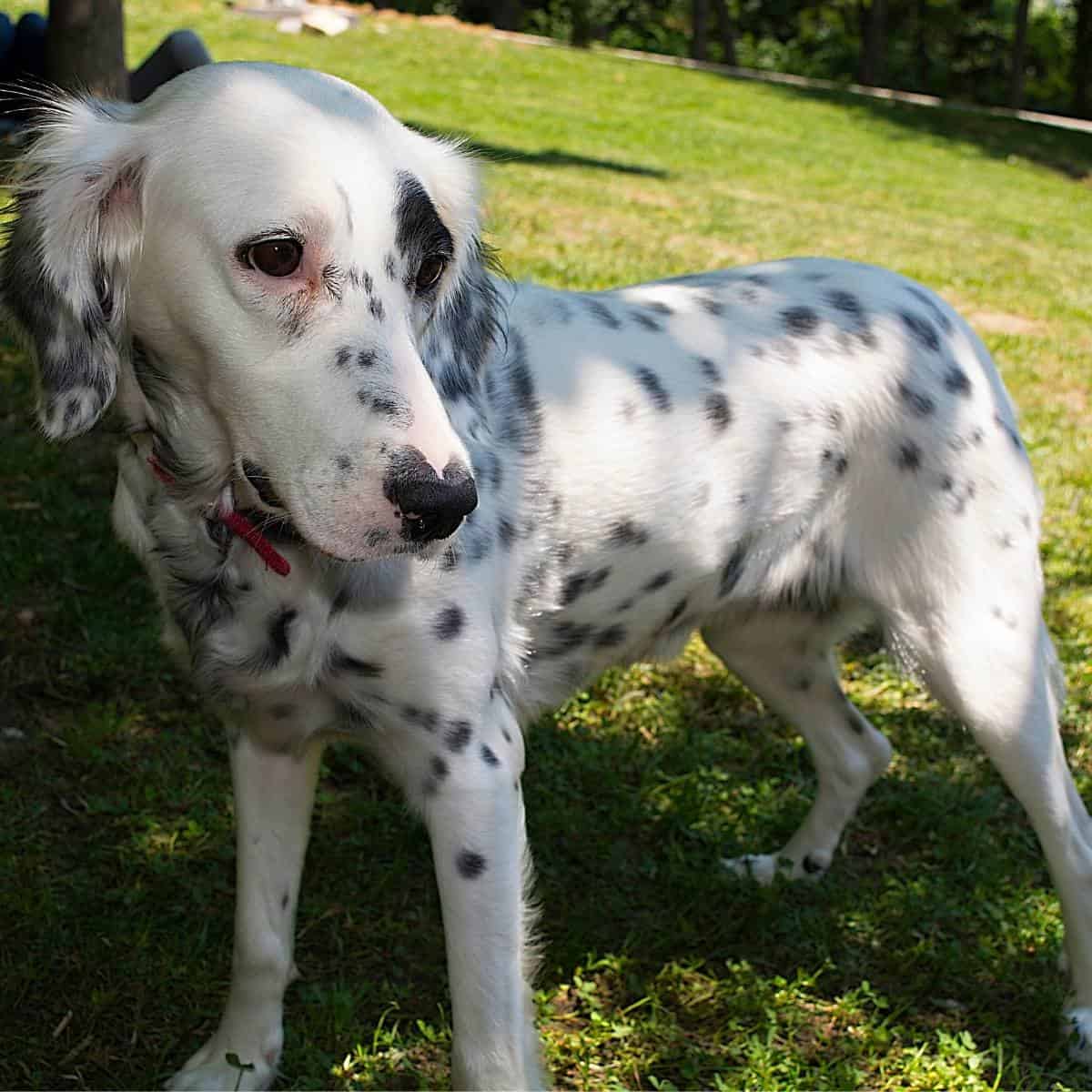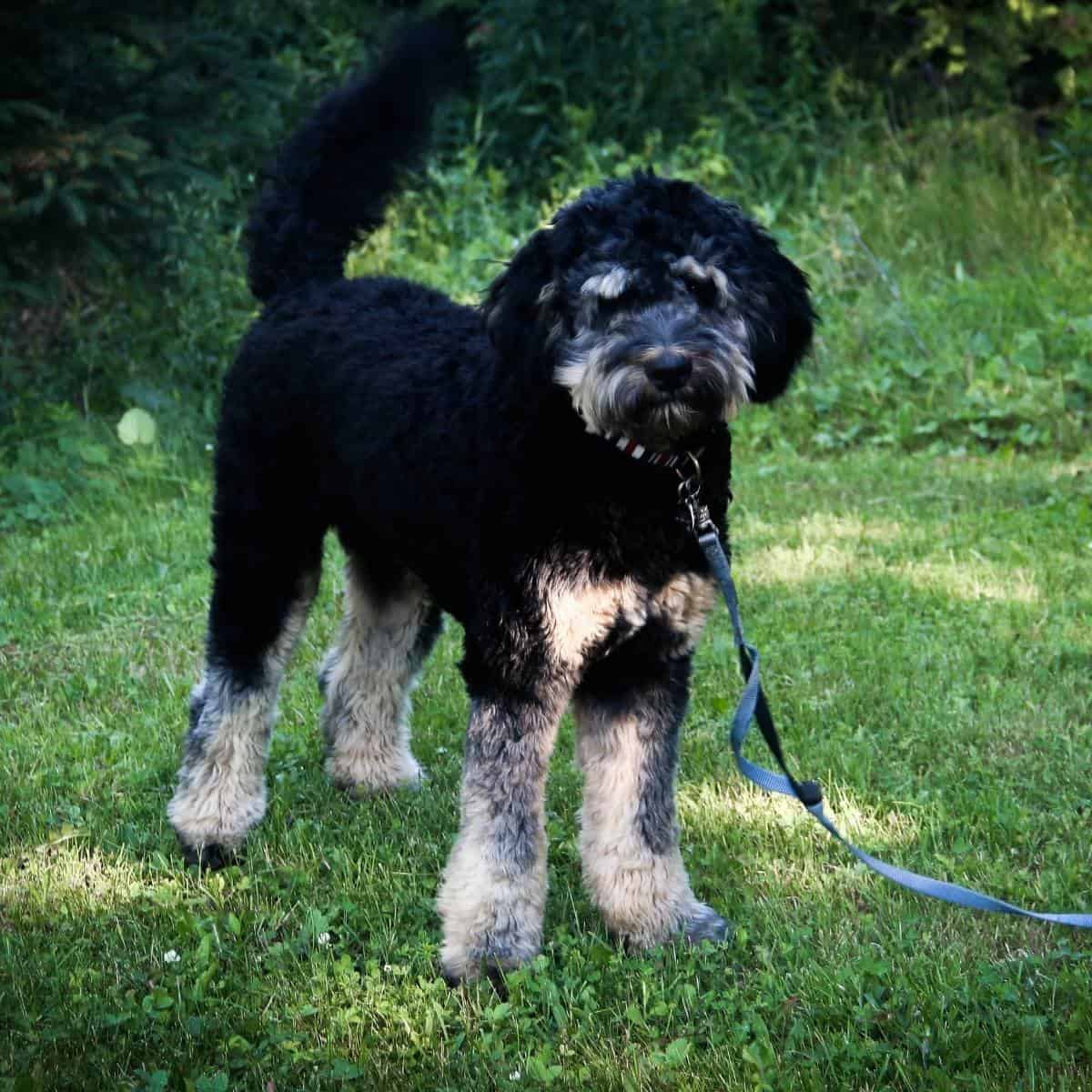Labrador Husky Mix: Find Out About Your New Best Friend
Because Labrador retrievers have been touted as America’s most popular dog breed for the last thirty years, and Siberian huskies regularly place in the top 20, it’s no surprise that a labrador husky mix could be an incredibly popular dog!

As a combination of two different working breeds, the “huskador” or “labsky” is typically a highly active, loyal, intelligent, and family-friendly dog. The husky labrador Mix can also be trained to work in either breeds’ designated field, or even as a companion or service animal.
Why People Love the Husky Lab Mix Breed
Although there are countless reasons to love a husky lab mix, here are some of the most common:
- Affectionate with their family
- Highly intelligent dogs
- Loyal and protective
- High energy levels
- Do great in cold weather
- Can be skilled at breed-specific work or as a service animal
Breed Histories
Both labrador retrievers and Siberian huskies have rich histories involving hard work and strong bonds to the people around them.

Labrador Retriever
The history of Labrador retrievers begins roughly 500 years ago when fishermen from England, France, Spain, and Portugal began making their way to the Canadian coastline. Traveling to the island of Newfoundland with the fishermen were dogs of various breeds, who, in time, integrated into a landrace known as the St. John’s Dog. Originally, St. John’s Dog came in many different sizes, which eventually split into two differently sized breeds; the Newfoundland, and the labrador retriever.
What would become the labrador retriever became well known for their love of the water, and the skills they possessed for working in and around it. They pulled nets and fishing lines, dove under the water, and fetched hats or other items out on the water. The Earl of Malmesbury saw great potential in the St. John’s Dog for duck hunting and took a personal interest in the breed; beginning a breeding program and calling them Labrador dogs. At the same time, the dukes of Buccleuch and Home in Scotland were also fascinated by the St. John’s Dog and had several imported. Years later, in the 1800s, the breed’s survival was secured when a chance meeting between these families allowed two dogs, Avon and Ned, to create the foundation for the modern Labrador retriever.

Siberian Husky
The Siberian Husky has a simpler origin, dating back 4,000 years or more. They were raised as an all-purpose dog for the Chukchi tribe in northern Siberia for centuries. The dogs were firmly bonded to their people and were viewed highly enough by the tribe to be permitted to sleep inside family dwellings at night.
In 1909, a large group of Chukchi dogs traveled to compete in the long-distance, All-Alaska Sweepstakes race and finished third! Then, during a Diptheria epidemic in the winter of 1925, a relay of dog teams brought life-saving medicine and supplies to the small, isolated town of Nome, Alaska. One of those drivers, Leonhard Seppala, helped bring the dogs to popularity by bringing his team to the US, and competing in (and winning) additional sled races. By 1930, Siberian Huskies had earned AKC breed recognition, and only eight years later, the Siberian Husky Club of America was founded.
Overview of the Huskador Breed
Size: Lab husky mixes can be medium or large-sized dogs, and are usually 20-28 inches tall.
Weight: They typically weigh between 40 and 60 pounds, depending on the sizes of their parents and which breed they take after more.
Temperament/Personality: Like both of the parent breeds, the labsky is hard-working, family-oriented, highly intelligent, and forever loyal.
Lifespan: Similar to both labs and huskies, a healthy huskador will typically live between 10 and 12 years.
Unique Qualities: Depending on which breed your dog favors, your dog may be skilled at retrieving work, pulling a sled, or working as a service animal. They can also have beautiful unique appearances thanks to the striking facial markings common in huskies.
Do they shed: This mixed breed is a voracious shedder and will require regular grooming.
Hypoallergenic: Husky lab mixes are not hypoallergenic at all.
Health Issues: Some of their most common health problems include eye conditions, allergies, obesity, and hip dysplasia.
What does a Huskador look like?
One thing about a mixed breed dog is that you never really know which parent they’ll look the most like. Not only do labs and huskies have major differences in terms of body conformation, head structure, and general appearance, but also their coat colors and markings. To better understand what a husky lab mix looks like, let’s take a closer look at each parent breed.
Labrador Retrievers
Per their official breed standard, labrador retrievers only come in three main colors, black, chocolate, and yellow. These coat colors can have a range of hues, but combination colors, large patches of white fur, and brindle are all considered disqualifications. A small white patch on the chest is acceptable but considered undesirable compared to solid coloration.
Labrador retrievers have proportionally sized ears that hang somewhat close to the head, positioned quite far back and a bit low on the skull. The ears should not be too heavy or large but should reach the inside of the eye when pulled forward. Black and yellow labs should have brown eyes, and chocolate labs can have either hazel or brown.
Siberian Husky
The coloring and markings for Siberian Huskies are much more flexible; agouti and white, black and white, gray and white, red and white, sable and white, and white are all standard colors. Additionally, The American Kennel Club breed standard allows for all Husky colors, including 14 which are recognized but not standard. Also included in the Husky breed standard is that “it is quite normal to see a wide variety of visually striking patterns and markings on the head.”
The ears of a husky should be medium-sized, triangular, and close together in their position at the top of the head. A husky’s ears should be strongly erect, well-furred, gently arched at the back, with slightly rounded ear tips. Siberian Huskies can have brown or blue eyes, one of each, or particolored eyes.
These differences and others, go to show that labrador husky mixes can come in an infinite number of appearances! If your pup has a significant amount of white or eye-catching facial markings, those could be indicators that their coat favors whichever parent is a Siberian Husky. If your dog has ears that hang down or dark-colored eyes, he may favor the labrador Retriever appearance more.
Black Lab Husky Mix
Black is a standard color in both labrador retrievers and Siberian huskies, so your pup could potentially get their coloring from either parent. Your dog could have solid black coloring like a lab or agouti (two or more bands of pigment on the fur) like a husky.
Chocolate Lab Husky Mix
Although chocolate or brown is a standard color in labs, it is a recessive coloring in huskies. Even so, it’s not impossible to find a chocolate lab husky mix. If your dog is a true, chocolatey brown color, that is most likely inherited from the labrador retriever parent, while a red-brown color is typically more common in huskies.
Yellow Lab Husky Mix
In a situation similar to chocolate coloring, yellow is a standard color for labs, but not so much for huskies. If your dog’s coat leans more to a yellow or golden color, he’ll look more like a yellow lab, but if your dog has a reddish or brownish yellow, he could look more like a husky.
How big do Lab Husky mixes get?
Per the AKC Labrador Retriever standard, a male lab should measure between 22.5 and 24.5 inches at the withers and a female lab should measure 21.5 to 23.5 inches. Males in working condition should weigh 65 to 80 pounds and females 55 to 70 pounds.
Per the AKC Siberian Husky standard, a male husky should measure between 21 and 23.5 inches at the withers and a female husky should measure 20 to 22 inches. Male huskies should weigh 45 to 60 pounds while females weigh 35 to 50 pounds.
Growth charts online show that the two breeds weigh about the same until their third month when labs will begin to show their larger size. Month to month, labs and huskies of the same age and sex will typically weigh within five pounds of each other and often had an overlap in potential weights. A lab husky mix can fall to the favor of either breed or somewhere in the middle of the two.
Are Husky Lab mixes aggressive?
Both labrador retrievers and Siberian huskies are very people-oriented breeds and are not known to be aggressive. Labs tend to be friendly, laidback, and patient dogs and huskies are seen as affectionate, intelligent, and quirky. Neither breeds possessive the qualities preferred for guard dogs nor are they overly suspicious of strangers or other dogs. That being said, aggression can be an issue for any dog breed based on their upbringing, and life experiences.
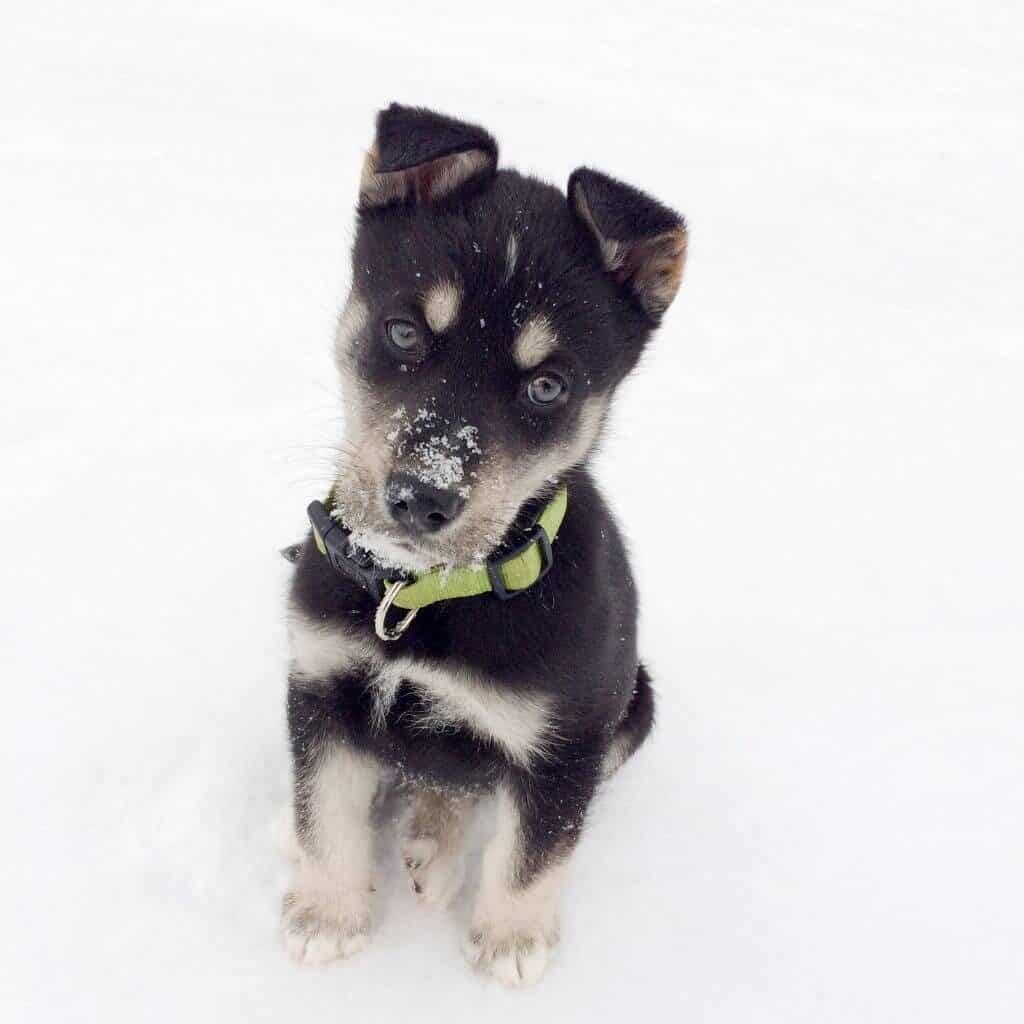
Common Health Issues in Lab Husky Mix
Some of the most common health issues found in lab husky mixes are hip dysplasia and eye conditions. These are issues found in both labrador retrievers and Siberian huskies, so they are unlikely to be bred out by this cross-breeding. Additionally, health issues such as obesity, allergies, and elbow dysplasia can be problematic.
Is a Huskador Easily Trainable?
Thanks to their high intelligence, ingrained loyalty, and eagerness to please, this mixed breed is often easy to train and quick to learn new tricks. Like most intelligent beings, dogs may respond best to positive reinforcement training. It also helps to begin training your dog as soon as you bring them home, and to maintain the habit throughout the dog’s life.
Husky Lab Mix Breed Rescues
Because this mixed breed is a fairly new “designer dog,” there aren’t many rescues dedicated to them. It is more common to see husky lab mixes in regular rescues and shelters or online through sites like Petfinder. Local shelters or rescues dedicated specifically to labs or huskies may have a mixed dog available for adoption.
Best Place to Find Puppies
As a designer dog, finding a responsibly-bred labsky puppy can be a difficult task. The unfortunate truth is that many of the pups you see are the result of an accidental breeding, not the result of a planned pregnancy between two wellbred, registered dogs. As such, it is important to ask questions about the health, care, genetics, temperament, and behavior of the parents if that information is available.
It is most common to see Huskadors online on pet adoption websites such as Petfinder and Adopt-a-Pet, or local shelter and rescue websites. In these cases, information about the dog’s parents may not be available, and asking about the care and needs of the individual dog will be more important. Has the dog been seen by a veterinarian? Is he behaving normally for his age? What will his needs be going forward? Dogs of this mixed breed can vary from a minimal fee such as $10 to several hundred dollars. It really just depends on where you get them from, the number of dogs there, and the popularity of the parent breeds in your area.
All in all, lab husky mixes can make great dogs for a variety of people, households, and environments. They are a combination of two of the most popular dog breeds, which are known for being highly intelligent, athletic, friendly, family dogs. If you think a husky lab mix is right for your family, make sure to do your research and reach out to rescues and shelters near you!
References and Sources
American Kennel Club. (2022, February 23). Labrador Retriever Dog Breed Information – American Kennel Club. Retrieved February 23, 2022, from https://www.akc.org/dog-breeds/labrador-retriever/
American Kennel Club. (2022, February 23). Siberian Husky Dog Breed Information – American Kennel Club. Retrieved February 23, 2022, from https://www.akc.org/dog-breeds/siberian-husky/
Cookson, J. (2016, September 7). The History of the Siberian husky. DVSHR. Retrieved February 23, 2022, from https://www.siberianhuskyrescue.org/history/
Cutts, S. (2020, November 20). Husky Lab Mix – A Complete Guide To The Huskador Dog. The Labrador Site. Retrieved February 23, 2022, from https://www.thelabradorsite.com/husky-lab-mix/#history
Dogtime. (2022, February 23). Labsky. DogTime. Retrieved February 23, 2022, from https://dogtime.com/dog-breeds/labsky#/slide/1
Flaim, D. (2020, November 20). Labrador Retriever History: Behind America’s Most Popular Breed. American Kennel Club. Retrieved February 23, 2022, from https://www.akc.org/expert-advice/dog-breeds/labrador-retriever-history-behind-the-breed/
Johnstone, G. (2021, August 25). Husky Labrador mix: Huskador Breed Information, Puppies & More. LoveYourDog. Retrieved February 23, 2022, from https://www.loveyourdog.com/husky-lab-mix/
